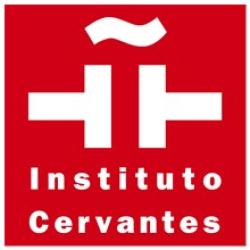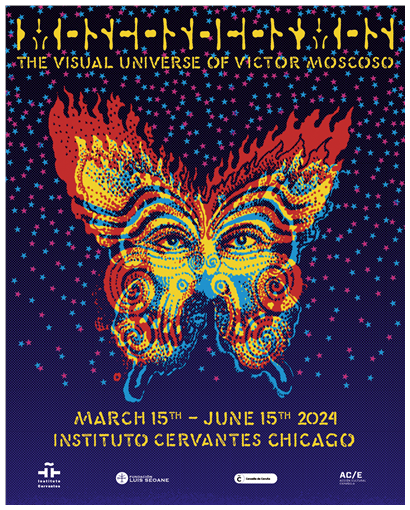
Instituto Cervantes of Chicago (31 W. Ohio St.), the city’s leading not-for-profit center for Spanish language and cultural exchange, announced a new curated exhibition spotlighting the graphic design work of Spanish-American artist and AIGA Medalist Victor Moscoso, best known for his psychedelic rock posters, advertisements and underground comix in San Francisco during the '60s and ‘70s. The New York Times observes, “Moscoso’s riotous, perceptually and conceptually confounding works advanced a countercultural ethos of imaginative and instinctual freedom whose effects continue to reverberate in today’s artistic culture.”

The opening reception, featuring comments by exhibition curator David Carballal, will take place Friday, March 15 at 6 p.m. at Instituto Cervantes of Chicago, and is free and open to the public. RSVP here.
The exhibit, featuring more than 80 works, will be on-view through June 15. Gallery hours below:
- Monday to Thursday 10 a.m. – 6 p.m.
- Friday 10 a.m. - 2 p.m.
- Saturday 10 a.m. - 1 p.m.
- Closed on Sunday
“Moscoso Cosmos: The Visual Universe of Victor Moscoso” brings a wide selection of the work of one of the most original and influential graphic designers of the 20th century, showcasing Moscoso’s famous psychedelic rock posters made in just eight months from 1966 until 1967, and fourteen issues of the underground magazine Zap Comix published from 1968 for more than 40 years. Also included in the exhibition are a selection of posters, record covers, comic strips, illustrations for books and magazines and animation and biographic photographs that complete a journey marked by iconic images of the second half of the 20th century. Moscoso's work comes mainly from the collection of the City Council of A Coruña, the largest public collection of the artist in Europe.
Victor Moscoso was born in the Coruña town Vilaboa (A Coruña, España) in 1936. In 1940, he traveled with his family to New York and settled down in Brooklyn. He trained as a designer and an artist at the Industrial Art Institute in Manhattan, at the Cooper Union School and at the Yale University School of Art, where he was a student of Bauhausmaster Josef Albers, whose teachings about color interaction would become a fundamental cornerstone in his work as a graphist.
In 2017, Moscoso received the Augustus Saint-Gauden award from the Cooper Union and in 2018 the AIGA medal, one of the most recognized awards in the graphic design field. He is considered the most original and ingenious within the genre and his work is constantly reviewed in new exhibitions, anthologies and essays. Currently, Victor Moscoso continues drawing, making collages and painting in his studio in San Jerónimo Valley, Calif.
For more information on “Moscoso Cosmos: The Visual Universe of Victor Moscoso," click here.
About Instituto Cervantes
Instituto Cervantes is a public not-for-profit institution created by Spain in 1991 to universally promote the teaching, study and use of Spanish and contribute to the dissemination of Hispanic cultures abroad. Reporting to the Ministry of Foreign Affairs, European Union and Cooperation of Spain, it collaborates with prestigious institutions, both national and international, public and private, with the aim of ensuring that products and services related to Spanish are governed by quality criteria and to promote the meeting and exchange of Spanish and pan-Hispanic culture with other cultures of the world.
In its activities, the Instituto Cervantes fundamentally addresses the linguistic and cultural heritage that is common to the countries and peoples of the Spanish-speaking community. It is present in more than 90 cities in 45 countries, through its centers, classrooms and extensions, on five continents. In addition, it has two headquarters in Spain, the headquarters in Madrid and the headquarters in Alcalá de Henares.

